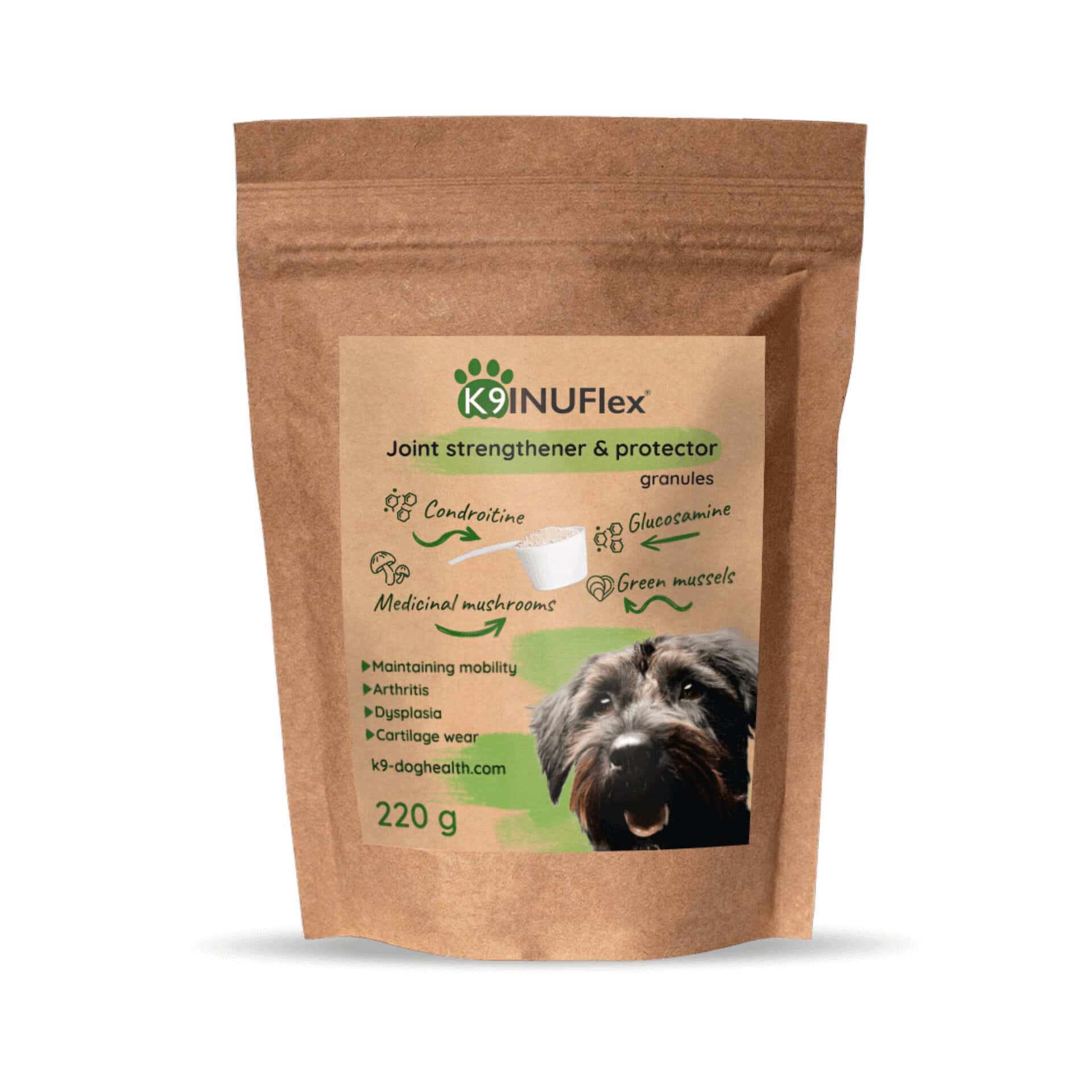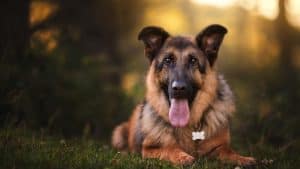Guard dog – First and foremost, it cannot be emphasized enough that guard dog work is one of the most responsible branches of dog training! Taking a nonchalant, unprofessional, or perhaps “DIY mischief” approach is not equal to carefully structured, purposeful guard dog training. It can lead to serious, sometimes tragic consequences.
Unfortunately, there are cases where certain owners consider guard dog training as “THE TRAINING”. Viewing everything else as a waste of time.
- Why should the dog come back when called or walk nicely by your side when it’s on a leash anyway?
- Why is it good for the dog to stay in place on command? I can just tie it up and that’s it.
- Why should it let go when I want it to grip?
Such questions may arise for those who are fixated on the captivating image of a dog dominating its owner. However, the reality is not that simple. The basic formal elements learned and reliably executed during obedience exercises will form the foundation for more complex tasks in the future. Through obedience or disciplinary exercises, the dog’s controllability is conditioned, making it suitable and willing to follow our commands.
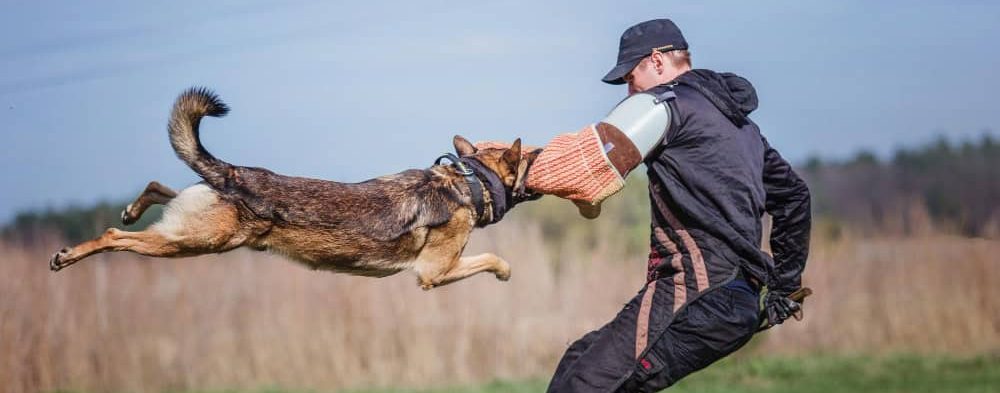
A well-trained guard dog protects its territory with confidence, obedience, and strong loyalty to its handler.
Controllability, obedience to commands? Are we in the military? Of course not, but responsible dog ownership, especially in gguard dog work, requires discipline.
A dog that has been accustomed to obedience since puppyhood and is held in check – whether it’s a poodle or a Rottweiler – becomes a source of pride for its owner. Due to its discipline, enjoys much more freedom than poorly kept companions.
Guard dog work and control
Due to its controllable behavior, there is minimal chance that it will pose a burden or danger to its immediate or broader environment. Such a dog can be let off the leash without worry because it will come back from anywhere when called. It won’t engage in fights with other dogs on a whim because its owner has forbidden it. It won’t run across the road because it has learned to stand on command, and so on. There are countless situations where we and our dogs benefit from the advantages of obedience. Whether we are hobbyists or professional dog handlers.
Many believe that this type of training is only for working dogs. Even though, regardless of whether we are raising a working dog or a family pet, every dog needs basic obedience. Although it originally intends to please its owner and fulfill their wishes, the dog still has to learn it.
Guard dog work and authority
Obedience fundamentally rests on the authority and consistency of the owner!
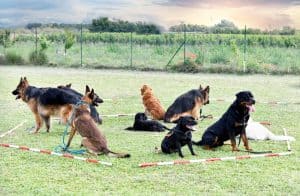
The dog, like its wolf ancestors, is a complex social being that “thinks” in a system of subordination and dominance. To feel good in its skin, that is, to live balanced, it needs to clearly understand the power dynamics with its owner and within its family or pack. The dog likes to know who’s in charge, whose word is sacred. This provides security for the dog. Moreover, like every social animal in a group, if possible, it instinctively seeks to climb higher in the hierarchy. In extreme cases, this can manifest as questioning the owner’s authority, open defiance of their will, and, most often, in a more subtle form (e.g., selective deafness, muddling tasks, fake peeing, etc.).
The inclination toward obedience, or, in other words, respect for authority, varies by breed and even within a given breed, depending on the individual. Depending on its temperament, one dog may easily accept its situation, while another may need more “persuasion.” Therefore, there is no general recipe for developing obedience; the method varies from dog to dog, but it is absolutely necessary.
I found this brief detour important because a responsible person starts guard dog tasks only with an obedient, disciplined dog, as an unreliable, or worse, uncontrollable dog – especially in inexperienced hands – can pose a serious danger not only to the trainer, assistant, or its owner but also to strangers.
Now, about guard dog work
We can divide guard dog work into two directions according to its purpose:
- One trains the dog to repel potential attacks,
- the other is a kind of hobby, a combat sport for dogs.
Both directions have their uses and roles.
- In the case of hobby or sports dogs, the required formal exercises and routines are channeled into more regulated frameworks demanded by competitions. The emphasis is not on effective combat against humans, but on providing meaningful entertainment for the dog and its owner. When pursued more seriously, it offers a popular, performance-oriented option for dog sports. All of this is an extremely useful activity that expends the dogs’ excess energy and helps them express their inherent abilities, both mentally and physically.
- Trained and “sharpened” dogs in combat can be found among service dogs performing dangerous tasks (e.g., patrol, border control, special commando unit dogs, etc.). After thorough and careful training, these dogs can be used as a kind of self-defense weapon. It’s a strange contradiction, but their abilities and acquired knowledge come into play in situations where human life is at stake, either indirectly or directly.
Guard dog Work and Instincts
Trainers build modern guard dog work on two essential instincts: prey drive and protective instinct. These inner drives form the foundation of all exercises. Trainers carefully guide both instincts through a step-by-step training program. They help dogs develop stable, purposeful behaviors from their natural reactions. Through consistent work, dogs learn when and how to respond effectively. Trainers balance these two instincts depending on the training phase and the dog’s personality.
A reliable working dog shows both prey drive and protective instinct in proper proportions. Trainers expect this balance whether they prepare a dog for sport or real service work. In some phases, they emphasize the prey drive more to build speed and energy. In other stages, they strengthen the protective instinct to improve confidence and control. Good training always adapts to the dog’s natural tendencies. With the right structure, dogs grow into calm, responsive, and focused working partners.
Different instincts
Prey instinct
Sport dogs often show a strong prey drive during training and play. Young puppies actively chase, grab, and wrestle with one another or nearby toys. They show natural hunting behaviors as they topple, bite, and hold objects. Trainers recognize this instinct and shape it to serve guard dog training goals. They teach the dog to view the protective arm as prey to chase and grip.
Many trainers use prey drive because it works well with different dog breeds. Even non-guard breeds can learn through this playful method. Puppies begin grip work early using toys and games to encourage natural instincts. Handlers guide this energy into focused exercises and consistent routines. This training method suits dogs with less ideal temperaments for traditional guard dog roles. It offers useful alternatives for both the dog and the owner.
Protective instinct
In police and border control work, trainers focus on strengthening the dog’s protective instinct during guard dog training. They aim to prepare the dog to defend itself and its handler against physical attacks. The dog must be able to fight back and engage effectively with an attacker. While fighting is part of natural canine behavior, combat with humans is not instinctive. Trainers must teach dogs specific techniques for human-related conflict. These skills do not come naturally and must be developed through careful training.
Although some breeds show strong protective instincts and aggression, these traits developed through human selection and purposeful breeding. We cannot treat them as purely natural drives. Humans shaped these abilities and continue to use them in working dogs. Even in well-bred dogs, this potential only becomes visible with proper training. Handlers can also choose to suppress these traits completely, depending on the dog’s role.
Breed Prejudices
Unfortunately, sensationalist media, demonstrating significant amateurism, blame not the heartless, money-driven “breeders” and irresponsible dog owners behind tragic events but rather blame these breeds and, in worse cases, THE DOG itself as a breed for the incidents. No dog breed is inherently evil or murderous. The blame lies with “breeders” who selectively breed for extreme aggression or produce mentally weak individuals, along with inadequate housing conditions and treatment.
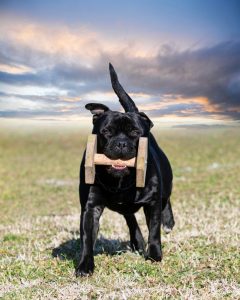
Whether for competitive sports or service use, the expectations for dogs intended for guard dog training are very high, regardless of the breed. Tangible results can only be achieved with dogs possessing suitable qualities. It’s a commonplace but true statement that the breeding of working dog breeds – especially popular breeds – has markedly diverged. One direction prioritizes exhibition conformation, while the other focuses on utility value and workability.
This perspective creates the strange and not very redeeming situation where so-called show dogs perform poorly, if at all, in the working field, while successful working dogs do not excel in exhibitions. Exceptions can rarely occur, but – as we know – exceptions only confirm the rule. Therefore, it’s crucial that those seriously interested in dogs choose a progeny from proven, successful working individuals because, without exaggeration, everything depends on this. The best trainer cannot work miracles with a dog lacking abilities, while a genuinely talented dog can overcome minor training deficiencies.
Working Dog Training
Working dog training places strong mental, physical, and emotional strain on both the dog and the handler. For this reason, trainers choose healthy dogs with strong bodies and confident, courageous personalities. A well-suited dog shows a stable and balanced nervous system with noticeable energy and activity. Puppies that eagerly seek food or toys and behave confidently in new places show great promise. These puppies react little or not at all to mild pain and act boldly. Such traits often indicate greater potential than a shy or timid puppy shows.
Trainers prefer dogs with strong instinctual reactions in food, play, and social interactions. These inner drives closely relate to each other and influence future training success. Because training builds on instinct, stronger instincts often mean better learning ability. Dogs with solid but not extreme instincts usually respond faster and more reliably during tasks. Of course, training, environment, and upbringing also shape how dogs develop. Still, natural instincts provide a useful guideline when selecting a working dog.
It might have made sense to start here, but this point deserves emphasis. From the beginning, owners should define their training goals and purpose. With a clear direction, they can choose the right breed and raise their future companion accordingly. This kind of foresight often pays off greatly in the long run.
If you are interested in other lifestyle programes, check out our articles on Dog-human relationship, Mantrailing, Dog Dancing, Frisbee, Weight Pulling, and more.
Whatever sport you do with your dog, it’s a good idea to use supplements to help alleviate the increased physical strain.
Check out our Hip & Joint support products.
